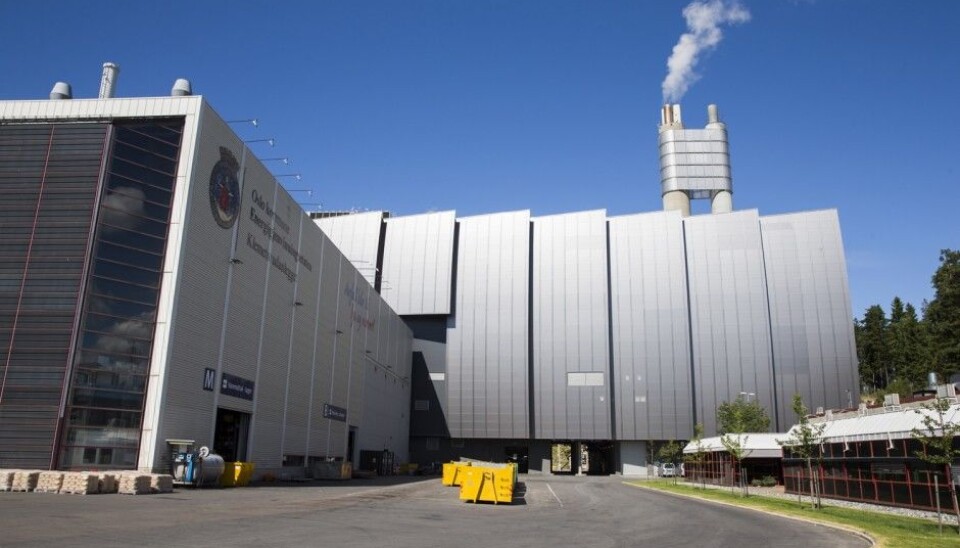
What’s the best way to implement carbon capture technology?
An Oslo-based researcher has a plan.
If we really want to limit the damage that will result from global warming, it won’t be enough to just cut carbon dioxide (CO2) emissions. The world will also have to find a way to capture a great deal of the greenhouse gases we produce.
The Paris international climate agreement says that countries should try to keep average global temperature increases below 2°C above pre-industrial levels, and that ideally we should work towards limiting that increase to just 1.5°C.
But this is unrealistic in light of today’s situation, according to American researchers who recently calculated the probability that the world could achieve this goal.
Glen Peters, who works at the Cicero Center for Climate Research, is nevertheless hopeful that the world still can adopt technologies to capture greenhouse gases from the atmosphere and safely store them.
Now he and a colleague from England have come up with suggestions for how politicians can achieve this difficult goal.
Can send the carbon abroad
Peters and his colleague say that the conversations during the Paris climate talks about carbon capture were very abstract, in contrast to the discussions at the 2015 talks about how much countries will actually cut emissions. In short, no country has specific plans for how exactly it will capture CO2.
In fact most of the discussions about carbon capture have been at a global level, which doesn’t help much because these measures must be taken at a more local level. Therefore, the researchers’ first suggestion is that politicians begin to talk about how much responsibility different countries should take for CO2 capture. Countries will have to use economic rewards to encourage CO2 capture.
Countries must also agree on a system that will allow them to ensure that entities that commit to CO2 capture actually do what they say they will do. Currently, one of the most common ways to capture carbon is in combination with bioenergy, which is called BECCS. In this context, BECCS means a bioenergy plant that grows vegetation that can be burned to create energy. The CO2 that is produced is then captured and stored safely.
Some countries have good conditions for cultivating bioenergy crops, while other countries are more suited to implementing advanced carbon capture systems. The two researchers say that more countries will have to cooperate to make carbon capture and storage a reality. For example, bioenergy crops can be grown in Cameroon. The crops can be sent to Britain to be burned for energy, and where the carbon can be captured. Norway can contribute by storing the carbon.
Independent measurements, reporting and verification will be necessary to ensure that the process is properly implemented across countries. For example, some entity must guarantee that Norway is actually able to store CO2 for many years.
The two researchers also believe that politicians must provide for the development and use of technologies that can handle large-scale carbon capture. Peters and other researchers concluded earlier this year that this technology is essential in the context of several of the UN Climate Panel scenarios that describe measures to prevent the Earth's temperature from rising more than two degrees. If we are going to reach that target, the researchers believe that as many 4000 carbon capture and storage facilities will be needed by 2030. But only a few of these facilities have been proposed for construction by 2020.
Norway currently only has plans for a single such facility, with the decision on whether or not it will be built to be made in 2019, according to the NTB.
Uncertain effect on the environment
Not everyone is sure if carbon capture is realistic. Many have criticized CO2 capture as a solution, primarily because the technology is still relatively immature, according to researchers. In addition, some are concerned that the methods used for burning bioenergy crops are far from safe.
Phil Williamson, a researcher at the University of East Anglia in England, wrote in a comment in the journal Nature last year that large-scale production of bioenergy crops can have major consequences for the environment. Currently, we know don’t know exactly what these effects might be, but one possibility is that deforestation may increase dramatically as large areas are used to grow bioenergy crops. Large-scale deforestation might cause more damage to the planet than what is projected to happen if the planet warms by as much as 2.8 degrees, Williamson wrote.
Williamson believes we should focus on cutting emissions, and not on a strategy that relies on allowing emissions to be released now for capture and storage later.
However, he also acknowledges that much still remains to be done:
“But the unwelcome truth is that, unless a lot more effort is made to cut emissions, significant CO2 removal will need to begin around 2020, with up to 20 gigatonnes of CO2 extracted each year by 2100 to keep the global temperature increase ‘well below 2°C.’”
-------------------------------------
Read the Norwegian version of this article at forskning.no































